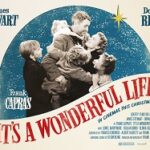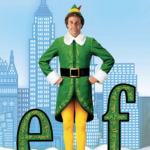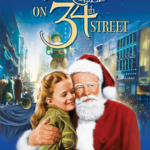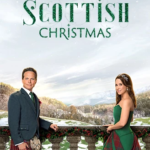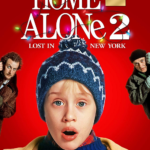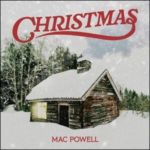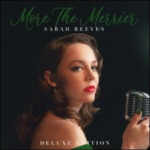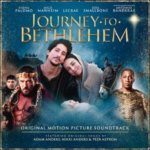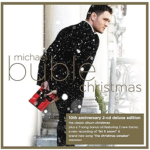ORIGINS of 20 Of Your Favorite CHRISTMAS TRADITIONS
~ The stories behind how and why we celebrate ~
By Don Stone
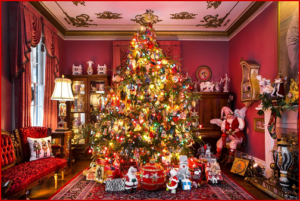 When was the first Christmas card sent? Why do we decorate trees? The origins of our favorite Christmas traditions have evolved over decades and even centuries.
When was the first Christmas card sent? Why do we decorate trees? The origins of our favorite Christmas traditions have evolved over decades and even centuries.
The Christmas season is far more rich in festivities and rituals than any other time of year. And every family celebrates differently.
There are lots of Christmas traditions that are practiced by a number of countries all over the world during the holiday season. These traditions can be as diverse as the culture and religious practices of each and every country in the world.
Here, we take a look at the origins of some of the most popular traditions, especially in America…
~ The Christmas Tree ~
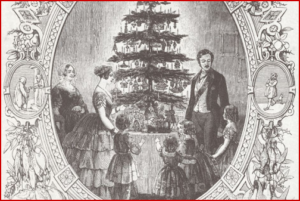 In 16th-century Germany, fir trees were decorated, both indoors and out, with apples, roses, gilded candies, and colored paper. The first reference of a fir tree decorated for Christmas is at Riga in Latvia in 1510. In 1521, the Princess Helene de Mecklembourg introduced the Christmas tree to Paris after marrying the Duke of Orleans. There also is a printed reference to Christmas trees in Germany, dated 1531.
In 16th-century Germany, fir trees were decorated, both indoors and out, with apples, roses, gilded candies, and colored paper. The first reference of a fir tree decorated for Christmas is at Riga in Latvia in 1510. In 1521, the Princess Helene de Mecklembourg introduced the Christmas tree to Paris after marrying the Duke of Orleans. There also is a printed reference to Christmas trees in Germany, dated 1531.
Another famous reference, to 1601, is about a visitor to Strasbourg, Germany (now part of France) who noticed a family decorating a tree with “wafers and golden sugar-twists (barley sugar) and paper flowers of all colors.”
Evergreens were used first in church plays at Christmas and hung with apples to symbolize a Paradise tree.
The Christmas tree was introduced to the United States by German settlers and by Hessian mercenaries paid to fight in the Revolutionary War.
In 1804, US soldiers stationed at Fort Dearborn (Chicago) hauled trees from surrounding woods to their barracks.
The Christmas Tree was brought to England by Queen Victoria’s husband, Prince Albert from his native Germany.
The above famous Illustrated News etching in 1848, featuring the Royal Family of Victoria, Albert and their children gathered around a Christmas tree in Windsor Castle, popularized the tree throughout Victorian England.
The custom of the Christmas tree spread quickly to the middle class, to working people, and throughout the colonies. Franklin Pearce, the 14th US President (1853-1857) was the first to have a Christmas tree in the White House. Brought to America by the Pennsylvania Germans, the Christmas tree became popular by the late 19th century. Today, it’s difficult to find a home without a tree, real and artificial.
![]()
~ Christmas Tree Lighting and Decorations ~


The Christmas tree originated in the upper Rhine region of Germany and quickly spread to other parts of the world. The tree was decorated with small candles, which lighted up the tree and also made a very pretty sight. This tradition of lighting up the tree with candles dates back to the middle of the seventeenth century. From Germany, it caught the fancy of East Europeans. Today, the whole world decorates Christmas trees with lights and other decorative items.
Earliest Christmas tree lights were tiny candles fixed to the tree branches with melted wax or pinned. Martin Luther (1483 – 1546) is said to be the first to have decorated a Christmas tree with candles to show children how the stars twinkled through the dark night.
In the 1850s, German company Lauscha, based in Thuringia, began to produce shaped glass bead garlands for Christmas trees. They also introduced the Rauschgoldengel, the Tingled-angel, dressed in pure gilded tin. The glass ornaments reached Britain in the 1870s, and North America around 1880.
Somewhere near 1880, candleholders were used. In 1882, ornaments were complimented by electric Christmas lights. Edward Johnson, a colleague of Thomas Edison, lit a Christmas tree with a string of 80 small electric light bulbs which he had made himself. By 1890, the Christmas light strings were mass-produced. By 1900, stores put up large illuminated trees to lure the customers. Small lanterns and glass balls to hold the candles became popular between 1902 and 1914.
Christmas lights are also known as fairy lights or twinkle lights. The small bulbs have different sizes and colors and can have various shapes. The Christmas tree is now put up and decorated around Thanksgiving and, in some cases, left up well beyond Christmas day. Many family ornaments and lights are handed down through generations to preserve traditions.
![]()
![]()
![]()
![]()
![]()
![]()
![]()
![]()
![]()
![]()
![]()
![]()
![]()
![]()
![]()
![]()
![]()
![]()
![]()
![]()
![]()
~ The Christmas Colors Of Red & Green ~
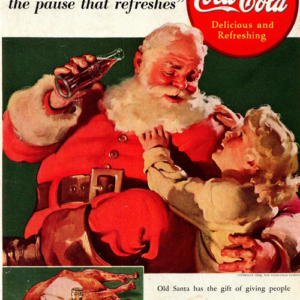

Red and green were first connected to a different holiday – the winter solstice, just like the Christmas tree. Hundreds of years ago, Celtic people thought holly plants were beautiful and brought good luck during the cold winter months.
So, they normally would decorate their homes with red and green plants to promote prosperity for the coming year.
The tradition was passed down through generations.
From a Christian perspective, many feel the colors, specifically holly wreaths are symbolic of Jesus’ crown. The red berries signify His blood and the spiky holly leaves the crown of thorns.
Then, there’s Coca-Cola. In 1931, the company hired Michigan artist Haddon Sundblom to make Santa more personable for upcoming Christmas magazine ads. So, the previously smaller impish Santa was transformed into a jolly, bearded man decked in red and white to match Coke’s color. The lettering throughout the ads were in green.
The ads showed Santa drinking Coke while he delivered presents surrounded by kids.
(If it were a Hallmark movie, he’d probably be drinking hot chocolate.)
The image caught on and became the one Americans thought of when the holidays rolled around.
![]()
![]()
![]()
![]()
![]()
![]()
![]()
![]()
![]()
![]()
![]()
![]()
![]()
![]()
![]()
![]()
![]()
![]()
![]()
![]()
![]()
~ Christmas Outside House Lighting ~
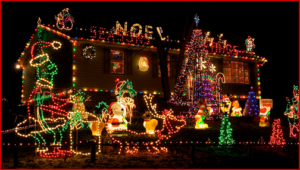

In early America, Christmas celebrations centered on food, fun, friends, and family, much like our festivities do today. Early settlers in America brought Christmas traditions from the “Old World” to the new, celebrating the holiday as they did back home. Churches were often decorated for Christmas while individual homes were decorated less frequently and more sparsely. Christmas decorations of the time involved natural materials such as holly, mistletoe, bay, and evergreen. Candles and fires were an integral part of early holiday traditions, but were less decorative than necessary at this point in history.
As mentioned earlier, during the 1880 Christmas season, Thomas Edison and assistant Edward Johnson introduced the first outdoor electric Christmas light display to the world. They displayed the lights outside of his laboratory compound, which sat near a railway where many people could see it each night. This was the first official outdoor Christmas display that was separate from decorating just the Christmas tree.
Today an estimated 150 million light sets are sold in America each year, adding to the tangled millions stuffed into boxes each January. They light 80 million homes and consume 6 percent of the nation’s electrical load each December. The average American’s monthly electric bill is around $114. But this year, Americans will spend between $199 and $573 on electricity during the holiday season, and some people will spend close to $1,000.
Christmas decorations used to be put up on Christmas Eve and not before. Indeed, many people believed that it was very unlucky to bring evergreens, the traditional item to decorate homes, into the house before that date.
Now, most people put up their decorations a few weeks before Christmas Day. Many begin the day after Thanksgiving. In the weeks leading up to and during Christmas, people hang decorations in their homes. These decorations are made of colored paper or foil. People also hang greenery around the house, such as holly and ivy. The needlelike points of holly leaves are thought to resemble the crown of thorns that Jesus wore when He was crucified. The red berries symbolize the drops of blood He shed.
![]()
![]()
![]()
![]()
![]()
![]()
![]()
![]()
![]()
![]()
![]()
![]()
![]()
![]()
![]()
![]()
![]()
![]()
![]()
![]()
![]()
~ Christmas Movies ~


Even though the Christmas holiday is celebrated around the world, by many diverse people groups and in various ways, there are some traditions that are uniquely American.
For instance, Americans tend to watch movies and special programs around the Christmas holiday time. These special shows provide a chance to relax and get in a holiday mood during what can be a stressful time of year.
Lately, The Hallmark Channel has shown nothing but Christmas films for the last three months of the year and actually has a Christmas in July promotion showing them non stop for a few weeks in summer. No thanks on that!
Some of the favorites include “A Charlie Brown Christmas,” Director Frank Capra’s “It’s a Wonderful Life,” “The Christmas Story,” “Home Alone,” “Rudolf the Red-Nosed Reindeer,” “Frosty the Snowman,” “The Grinch Who Stole Christmas,” “Elf” and “A Miracle on 34th Street.”
In addition to these older films, Hollywood usually opens blockbuster films during this time of year with hopes that Americans will be in the mood to go to the movies. As you plan your holiday schedule, keep watching these great movies, enjoy fire-side chatting, and eating popcorn.
Go to Our New Christmas Movies Page For This Month’s Television Schedule – Click Here
![]()
![]()
![]()
![]()
![]()
![]()
![]()
![]()
![]()
![]()
![]()
![]()
![]()
![]()
![]()
![]()
![]()
![]()
![]()
![]()
![]()
~ Holly & Ivy ~


One of the most popular Christmastime accoutrements, holly, has sharp edges, symbolic of the crown of thorns worn by Jesus at his crucifixion. The red berries represent blood.
The evergreen English holly (Ilex aquifolium), the common holly of Europe, cultivated also in North America, is closely associated with Christmas tradition and has become one of the most popular decorations.
In Scandinavia it is known as the Christ Thorn.
Ivy has to cling to something to support itself as it grows. This reminds us that we need to cling to God for support in our lives.
In Germany, it is traditional that Ivy is only used outside and a piece tied to the outside of a church was supposed to protect it from lightning!
![]()
![]()
![]()
![]()
![]()
![]()
![]()
![]()
![]()
![]()
![]()
![]()
![]()
![]()
![]()
![]()
![]()
![]()
![]()
![]()
![]()
~ Mistletoe ~
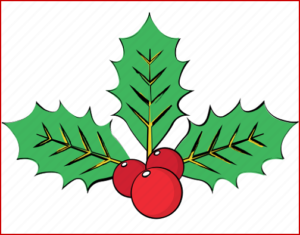

Mistletoe is a plant that grows on a range of trees including willow, apple and oak trees. The tradition of hanging it in the house goes back to the times of the ancient Druids. It was supposed to possess mystical powers which bring good luck to the household and wards off evil spirits.
It was also used as a sign of love and friendship in Norse mythology and that’s where the custom of kissing under Mistletoe comes from.
When the first Christians came to Western Europe, some tried to ban the use of mistletoe as a decoration in churches, but many still continued to use it! York Minster Church in the UK used to hold a special mistletoe service in the winter, where wrong doers in the city of York could come and be pardoned.
The custom of kissing under mistletoe comes from England. The original custom was that a berry was picked from the sprig of mistletoe before the person could be kissed and when all the berries had gone, there could be no more kissing!
The name mistletoe comes from two Anglo Saxon words ‘Mistel’ (which means dung) and ‘tan’ (which means) twig or stick!
![]()
![]()
![]()
![]()
![]()
![]()
![]()
![]()
![]()
![]()
![]()
![]()
![]()
![]()
![]()
![]()
![]()
![]()
![]()
![]()
![]()
~ Christmas Music ~
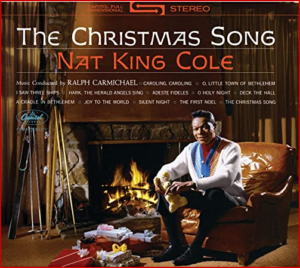

For many people, Christmas carols are synonymous with the holiday season and can invoke the spirit of Christmas in even the most Scrooge-like individuals.
Originally, carols were religious hymns written about the birth of Christ and the nativity. Beginning with St. Francis of Assisi (1182-1226), carols were sung in church to celebrate the birth of Jesus.
The oldest printed collection of Christmas carols was published in 1521 by Englishman Jan van Wynkyn.
In recent history, carols have come to encompass not only the nativity, but the Christmas season, and secular holiday traditions, including reindeer, snowmen, Santa Claus, and more. Along with centuries old carols, a new batch of pop songs celebrating the Christmas season has sprung up over the last century with the advent of recorded music.
A few radio stations in every market completely alter their regular format starting at Thanksgiving and play nothing but Christmas and holiday songs through Christmas day. In Atlanta, 104.7 The Fish has been doing just that for years.
Go to Our New Christmas Music For 2022 Page – Click Here
For the history and backgrounds of holiday songs, go to our Origins of Your Favorite Christmas Songs Page (Newly Expanded with the stories behind who wrote 60 of your favorite holiday classics) – Click Here
![]()
![]()
![]()
![]()
![]()
![]()
![]()
![]()
![]()
![]()
![]()
![]()
![]()
![]()
![]()
![]()
![]()
![]()
![]()
![]()
![]()
~ Santa Claus ~
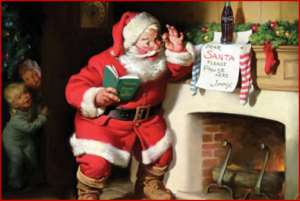

The patron saint of children and sailors, Saint Nicholas was a fourth-century bishop from Asia Minor. He was famous for giving gifts to children. His feast day, December 6, became a children’s holiday in Holland, where he is known as Sint Nikolaas. English colonists in New York (previously the Dutch colony of New Amsterdam) called him “Santa Claus” because they couldn’t pronounce the Dutch name. The English began celebrating the feast day on Christmas.
In the Netherlands and Germany, the Santa Claus figure often rode through the sky on a horse to deliver presents to children.
The Santa Claus we all know and love – that big, jolly man in the red suit with a white beard – didn’t always look that way. In fact, many people are surprised to learn that, prior to 1931, Santa was depicted as everything from a tall gaunt man to a spooky-looking elf. He has donned a bishop’s robe and a Norse huntsman’s animal skin. In fact, when Civil War cartoonist Thomas Nast drew Santa Claus for Harper’s Weekly in 1862, Santa was a small elflike figure who supported the Union. Nast continued to draw Santa for 30 years, changing the color of his coat from tan to the red he’s known for today.
In 1931, Coca-Cola began placing ads in popular magazines. Archie Lee, the D’Arcy Advertising Agency executive working with Coke, wanted the campaign to show a wholesome Santa who was both realistic and symbolic. So Coca-Cola commissioned Michigan-born illustrator Haddon Sundblom to develop advertising images using Santa Claus – showing Santa himself, not a man dressed as Santa.
For inspiration, Sundblom turned to Clement Clark Moore’s 1822 poem “A Visit From St. Nicholas” (commonly called “‘Twas the Night Before Christmas”). Moore’s description of St. Nick led to an image of a warm, friendly, pleasantly plump and human Santa. (And even though it’s often said that Santa wears a red coat because red is the color of Coca-Cola, Santa appeared in a red coat before Sundblom painted him.)
Our thanks to Coca-Cola for part of that research.
![]()
![]()
![]()
![]()
![]()
![]()
![]()
![]()
![]()
![]()
![]()
![]()
![]()
![]()
![]()
![]()
![]()
![]()
![]()
![]()
![]()
~ Christmas Stockings ~
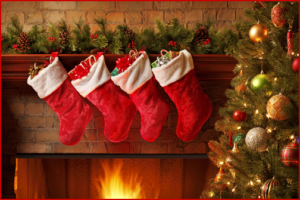

According to legend, a kindly nobleman grew despondent over the death of his beloved wife and foolishly squandered his fortune. This left his three young daughters without dowries and thus facing a life of spinsterhood.
The generous St. Nicholas, hearing of the girls’ plight, set forth to help. Wishing to remain anonymous, he rode his white horse by the nobleman’s house and threw three small pouches of gold coins down the chimney where they were fortuitously captured by the stockings the young women had hung by the fireplace to dry.
This led to the custom of children hanging stockings or putting out shoes, eagerly awaiting gifts from Saint Nick.
Sometimes the story is told with gold balls instead of bags of gold. That is why three gold balls, sometimes represented as oranges, are one of the symbols for St. Nicholas. And so, St. Nicholas is a gift-giver. This is also the origin of three gold balls being used as a symbol for pawnbrokers.
![]()
![]()
![]()
![]()
![]()
![]()
![]()
![]()
![]()
![]()
![]()
![]()
![]()
![]()
![]()
![]()
![]()
![]()
![]()
![]()
![]()
~ Christmas Bells ~
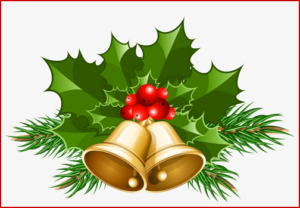

Tolling of bells had their origin in the pagan winter festivals and celebrations. It was believed that the noise would drive away the evil spirits. But using the bell just to ward off the evil was not enough. Later the bells started being used for other purposes as well. Tolling of bells by and large signifies any event, good or bad. Bells are rung to announce to the world the birth of Jesus.
Bells are a vital part of any church either in the villages or in the urban area. The young children of the olden times thought making a noise was part of celebrating the birth of Christ. Using the bells for merry making was an idea that caught on with the times.
Musical instruments were not affordable to many and Christmas bells made the perfect substitute. Further, the bells could be taken with the people to the church, they could be used for carols. Such advantages made the bells popular quite quickly. Tolling of the church bells informed the people of any event in the neighborhood.
![]()
![]()
![]()
![]()
![]()
![]()
![]()
![]()
![]()
![]()
![]()
![]()
![]()
![]()
![]()
![]()
![]()
![]()
![]()
![]()
![]()
~ Christmas Poinsettias ~
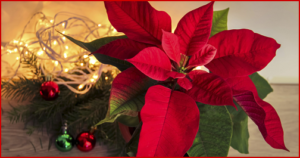

A native Mexican plant, poinsettias were named after Joel R. Poinsett, U.S. ambassador to Mexico who brought the plant to America in 1828. Poinsettias were likely used by Mexican Franciscans in their 17th century Christmas celebrations.
One legend has it that a young Mexican boy, on his way to visit the village Nativity scene, realized he had no gift for the Christ child. He gathered pretty green branches from along the road and brought them to the church. Though the other children mocked him. His cousin Pedro tried to cheer her up.
‘Pepita’, he said “I’m sure that even the smallest gift, given by someone who loves Him will make Jesus Happy.”
When the leaves were laid at the manger, a beautiful star-shaped flower appeared on each branch. The bright red petals, often mistaken for flowers, are actually the upper leaves of the plant.
From that day on, the bright red flowers were known as the ‘Flores de Noche Buena’, or ‘Flowers of the Holy Night’.
Poinsett was the first Ambassador from the USA to Mexico in 1825. He had some greenhouses on his plantations in South Carolina, and while visiting the Taco area in 1828, he became very interested in the plants and sent some back to South Carolina, where he began growing and sending them to friends and botanical gardens.
The shape of the poinsettia flower and leaves are sometimes thought as a symbol of the Star of Bethlehem which led the Wise Men to Jesus. The red colored leaves symbolize the blood of Christ. The white leaves represent his purity. The Poinsettia is also the national emblem of Madagascar.
![]()
![]()
![]()
![]()
![]()
![]()
![]()
![]()
![]()
![]()
![]()
![]()
![]()
![]()
![]()
![]()
![]()
![]()
![]()
![]()
![]()
~ Christmas Cards ~


The custom of sending Christmas cards started in Victorian England. Earlier, some adults had written Christmas letters. But letters took time to write; and people wanting to share season’s greetings with many others had a daunting task.
In 1843, British businessman Sir Henry Cole asked artist John Calcott Horsley to print some Christmas cards. (See an image of that card at left.) One thousand cards were printed in black and white and then colored by hand. The cards, which depicted a happy family raising a toast to the recipient, were criticized for promoting drunkenness. They sold them for the equivalent of a nickel today.
Christmas Cards appeared in the United States of America in the late 1840s, but were very expensive and most people couldn’t afford them. In 1851 Richard Pease, a variety store owner, commissioned the first printed Christmas card in the U.S.
London printers Charles Goodall & Sons became the first to mass-produce Christmas cards. In 1862 they created cards saying “A Merry Christmas.” Later, they designed cards with various designs, including robins, holly, mangers, snowmen, and even Little Red Riding Hood.
As printing methods improved, Christmas cards became much more popular and were produced in large numbers. In 1870 the cost of sending a post card, and also Christmas cards, dropped to half a penny. This meant even more people were able to send cards.
In 1875, Louis Prang, a printer who was originally from Germany but who had also worked on early cards in the UK, started mass producing cards so more people could afford to buy them. Mr Prang’s first cards featured flowers, plants, and children.
In 1915, John C. Hall and two of his brothers created Hallmark Cards, who are still one of the biggest card makers today!
In the 1910s and 1920s, homemade cards became popular. They were often unusual shapes and had things such as foil and ribbon on them. These were usually too delicate to send through the post and were given by hand.
Now, with the growth of the internet, there are numerous websites that allow you to create and send personalized digital Christmas cards.
The industry has grown to over $7 billion a year. But, that’s been on the decline. In the five years preceding 2013, US greeting cards revenue fell 5% as customers shifted to digital.
![]()
![]()
![]()
![]()
![]()
![]()
![]()
![]()
![]()
![]()
![]()
![]()
![]()
![]()
![]()
![]()
![]()
![]()
![]()
![]()
![]()
~ Christmas Candy Canes ~
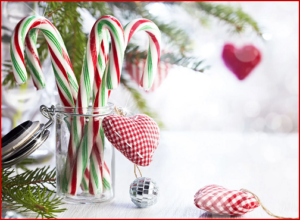

The Christmas Candy Cane originated in Germany about 250 years ago. They started as straight white sugar sticks.
A story says that a choirmaster, in 1670, was worried about the children sitting quietly all through the long Christmas nativity service. So he gave them something to eat to keep them quiet! As he wanted to remind them of Christmas, he made them into a ‘J’ shape like a shepherds crook, to remind them of the shepherds that visited the baby Jesus at the first Christmas.
However, the earliest records of ‘candy canes’ come from over 200 years later, so the story, although rather nice, probably isn’t true!
The use of candy canes on Christmas trees made its way to America by the 1800s.
Sometime around 1900, the red stripes were added and they were flavored with peppermint or wintergreen.
Sometimes, other Christian meanings are given to the parts of the canes. The ‘J’ can also mean Jesus. The white of the cane can represent the purity of Jesus and the red stripes are for the blood He shed when He died on the cross. The peppermint flavor can represent the hyssop plant that was used for purifying in the Bible.
Around 1920, Bob McCormack, from Georgia, started making canes for his friends and family. They became more and more popular and he started his own business called Bob’s Candies. Bob McCormack’s brother-in-law, Gregory Harding Keller, who was a Catholic priest, invented the Keller Machine that made turning straight candy sticks into curved candy canes automatic! In 2005, Bob’s Candies was bought by Farley and Sathers but they still make candy canes!
![]()
![]()
![]()
![]()
![]()
![]()
![]()
![]()
![]()
![]()
![]()
![]()
![]()
![]()
![]()
![]()
![]()
![]()
![]()
![]()
![]()
~ Christmas Presents ~


One of the main reasons we have the custom of giving and receiving presents at Christmas, is to remind us of the presents given to Jesus by the Wise Men: Frankincense, Gold and Myrrh.
Frankincense was a perfume used in Jewish worship and, as a gift, it showed that people would worship Jesus. Gold was associated with Kings and Christians believe that Jesus is the King of Kings. Myrrh was a perfume that was put on dead bodies to make them smell nice and, as a gift, it showed that Jesus would suffer and die.
Christmas itself is really about a big present that God gave the world about 2000 years ago – Jesus! One of the most famous Bible verses, John 3:16, says: ‘God loved the world so much, that he gave his one and only Son, so that whoever believes in him may not be lost but have eternal life.’.
All over the world, families and friends give presents to each other. Most children around the world believe in a Christmas gift bringer. It’s often St. Nicholas, Santa Claus or Father Christmas. In Germany they believe that it is the Christkind, in Spain they believe it is the Wise Men and in Italy they believe it is an old lady called Befana.
These presents are also left in different places! In most of Europe, the presents are left in shoes or boots put out by the children. In Italy, the UK and the USA presents are left in stockings.
In many countries, presents for friends and family may be left under the Christmas Tree. In the UK, they are often opened on Christmas day morning with all the family together.
Presents are opened on different days over the world as well. The earliest presents are opened is on St. Nicholas’ Eve on December 5th when children in Holland of ten receive their presents. On St. Nicholas’ Day (6th December) children in Belgium, Germany, Czech Republic and some other European countries open some of their presents.
Children in the UK, USA and many other countries, such as Japan, open their presents on Christmas Eve or Christmas Day, December 25th. The latest presents are opened is on January 6th (a month after the earliest). This is known as Epiphany and is mainly celebrated in Catholic countries like Spain and Mexico.
One popular way of giving presents in groups such as clubs, school classes and workplaces is to have a ‘Secret Santa’. This is where you pull the name of someone else in the group out of a hat (or other container!). You then buy a present for that person. When the presents are given out (often at a Christmas party) each person is given their present but they have no idea which person in the group bought it for them!
Recently, as large families and the resulting cost of gift giving increased, a similar method has developed of having individuals draw a name or two and only give gifts to that person.
![]()
![]()
![]()
![]()
![]()
![]()
![]()
![]()
![]()
![]()
![]()
![]()
![]()
![]()
![]()
![]()
![]()
![]()
![]()
![]()
![]()
~ Ugly Christmas Sweaters ~


This particular odd and relatively recent tradition stems from Canada.
The wearing of a sometimes obnoxious and outlandish sweater or sweatshirt with a holiday themed decoration was a bit slow to build, but really got a life of its own in the 1980s.
The Ugly Christmas Sweater Party Book (yes, there are many books devoted to nothing but ugly Christmas sweaters) has everything you ever wanted to know about ugly Christmas sweaters but didn’t care enough to ask.
The trend took off in 2001 in Vancouver, British Columbia. Fox Business claims that its a multi-million dollar business. Google it and you’ll be amazed at what pops up. Mainstream websites like Walmart, Amazon, Kohl’s, Target and Macy’s are mixed in with dozens of specialty sites like Tipsy Elves (they nicely come up first on Google), LightinTheBox, PopSugar ThisIsWhyImBroke,. There’s even a resourceful site called, of course, uglychristmassweater.com.
But, they’re all having fun with it.
![]()
![]()
![]()
![]()
![]()
![]()
![]()
![]()
![]()
![]()
![]()
![]()
![]()
![]()
![]()
![]()
![]()
![]()
![]()
![]()
![]()
~ Christmas Wreaths ~


Wreaths have been used as a decorative sign of Christmas for hundreds and hundreds of years. Christmas wreaths can adorn any part of your home. In many homes, this symbol of growth and everlasting life can be found both inside and out. It is common to find a number of wreaths on doors, over the mantle, or hung in windows.
The wreath is made of evergreens, most often pine branches or holly. They can be real or artificial. But, an artificial one just doesn’t smell the same as a real wreath. It is decorated with a variety of items including pine cones, holly berries, fruits, and just about anything you can imagine.
The wreath has significant meaning for the season. It’s circular shape represents eternity, for it has no beginning and no end. From a Christian religious perspective, it represents an unending circle of life. The evergreen, most frequently used in making wreathes, symbolizes growth and everlasting life.
Holly branches have thorns. When used in a wreath it represents the thorn on Jesus’ crown when he was crucified. Bright red holly berries symbolize Jesus’ blood that was shed for us.
Today, it is sometimes hard for some to remember the real meaning of Christmas. We get all caught up in the hype of Santa and his arrival. The wreath over the hearth brings a warmth to our hearts as we stop to reflect upon the true meaning of this very special day.
![]()
![]()
![]()
![]()
![]()
![]()
![]()
![]()
![]()
![]()
![]()
![]()
![]()
![]()
![]()
![]()
![]()
![]()
![]()
![]()
![]()
~ The Yule Log ~


The word yule meant “infant” in the language of the Chaldeans, who lived in the Middle East. The Germanic tribes of Northern Europe, including the Anglo Saxons, celebrated “Yule-day” or “Child’s Day.” The custom of the Yule log has been noted in France and Italy as far back as the 1200’s. It later spread throughout Europe.
On Christmas Eve, an enormous log would be cut and placed in the hearth. The log would be sprinkled with salt, oil, and mulled wine, and prayers said to protect the house from the Devil and lightning.
In some regions, the daughters of the family lit the log with splinters of the previous year’s log. In other regions, the lady of the house had the honor of lighting the log.
As iron stoves replaced giant hearths in the 1800’s, Yule logs became decorative, often being used as Christmas centerpieces and decorated with evergreens and candles. Cooks began creating pastry Yule logs, rolled cakes covered in chocolate or coffee and decorated with sugared holly and roses.
Many find comfort by going to YouTube and watching a video of a Yule Log burning for hours. (Click Here) Other options include Christmas music.
![]()
![]()
![]()
![]()
![]()
![]()
![]()
![]()
![]()
![]()
![]()
![]()
![]()
![]()
![]()
![]()
![]()
![]()
![]()
![]()
![]()
~ Gingerbread Houses ~
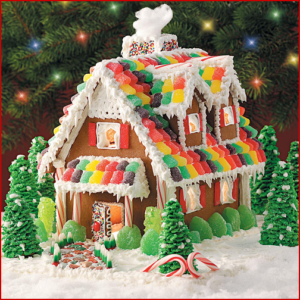

The tradition of decorated gingerbread houses began in Germany in the early 1800’s, supposedly popularized after the not-so-Christmassy fairytale of Hansel and Gretel was published in 1812. The Grimms’ original fairy tale includes the line: “When they came nearer they saw that the house was built of bread, and roofed with cakes, and the window was of transparent sugar.” (In later versions it became gingerbread, rather than just bread.)
Inspired by the story, German bakers began to craft small decorated houses from lebkuchen, spiced honey biscuits.
The tradition of gingerbread house making began with Europeans and Americans baking gingersnap cookies around Christmas. These cookies tend to be decorated with elaborate designs, usually gilded edges with pictures of animals, houses or other architecture.
Gingersnap cookies have always been associated with the spirit of Christmas, and as such, it was highly popular to bake a large assortment of ginger products during Christmas. With the concept of gingerbread houses, eventually this tradition merged with the idea of gingerbread houses. And since Christmas is a widely important time in German, the practice would become synonymous with Christmas itself.
The modern tradition of making gingerbread houses has become a family event at Christmas markets around the world.
![]()
![]()
![]()
![]()
![]()
![]()
![]()
![]()
![]()
![]()
![]()
![]()
![]()
![]()
![]()
![]()
![]()
![]()
![]()
![]()
![]()
~ The Nutcracker ~
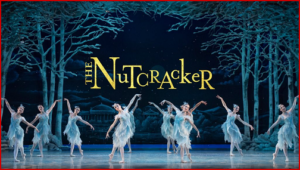

For many, the holiday season is not complete without a trip to watch this ballet. With music by Pyotr Ilyich Tchaikovsky and originally choreographed by Marius Petipa, the romantic tale of the young Clara’s Christmas Eve premiered Dec. 18, 1892, in St. Petersburg, Russia.
Tchaikovsky began work in February 1891, continuing his efforts while on an American tour later that year for the opening of Carnegie Hall. His homeward journey took him through Paris, where he discovered a new instrument: the celesta, whose clear, bell-like tone was perfectly fitted to The Nutcracker’s fairy-tale ambience. In the celesta’s ethereal notes, Tchaikovsky recognized the “voice” of his Sugar Plum Fairy, and he immediately wrote to his publisher, asking that the instrument be acquired for the performance.
It was performed for the first time outside of Russia in 1934 in England, and made its way to the United States in 1944 when it was performed by the San Francisco Ballet.
It became a must-see event in America in the 1960s, as performances spread across the nation. Numerous performances dot the metro Atlanta landscape each Christmas.
For many, the production has become nostalgic with memories of their first trip to see a ballet with their parents.
![]()
![]()
![]()
![]()
![]()
![]()
![]()
![]()
![]()
![]()
![]()
![]()
![]()
![]()
![]()
![]()
![]()
![]()
![]()
![]()
![]()
Include Your Upcoming Activities In Our Annual
Christmas & Holiday Event Guide. Call 770-596-6451
or email atlantachristian@comcast.net
Metro Atlanta Upcoming Christmas Events


November 29 - December 24
A Christmas Story
Gather the entire family for a new holiday theatrical tradition –
A CHRISTMAS STORY live on stage!
at Theatrical Outfit,
84 Luckie Street NW, Atlanta, GA 30303
(678) 528-1500


Now - December 26
The Atlanta Ballet "The Nutcracker"
At Cobb Energy Performing Arts Centre,
2800 Cobb Galleria Parkway,
Atlanta GA, 30339
A winter wonderland where falling snowflakes, twirling flowers and spinning stars guide
Marie and her Nutcracker Prince.
(770) 916-2852


Friday, December 29
New Year's Gospel Music Spectacular
Karen Peck & New River, Gold City,
The Kingsmen, Sounds of Jericho
At Buford Church of God,
4800 S. Lee Street,
Buford, GA 30518
7:00 p.m. (770) 945-4901


Now - December 31st
Lights of Life
At Life University
1269 Barclay Circle,
Marietta, GA 30060
(770) 426-2600
More than just a magical light display.
Train rides, Petting zoo, Concession stand.


Now - January 6th - Dollywood Smoky Mountain Christmas
2700 Dollywood Parks Blvd.
Pigeon Forge, TN 37863
1-800-DOLLYWOOD
Celebrate the season with the return of America's Best Christmas Event
for more than a decade!


Saturday, January 27
Take 6, Heavenly Voices
At Georgia State University’s
Rialto Center for the Arts,
80 Forsyth Street,
NW
Atlanta, GA 30303
A Rialto Series Performance
8:00 p.m. (404) 413-9TIX (9849)


Sunday, February 25
The King’s Singers,
Illuminated Voices
At Georgia State University’s
Rialto Center for the Arts,
80 Forsyth Street,
NW, Atlanta, GA 30303
A Rialto Series Performance
3:00 p.m. (404) 413-9TIX (9849)


